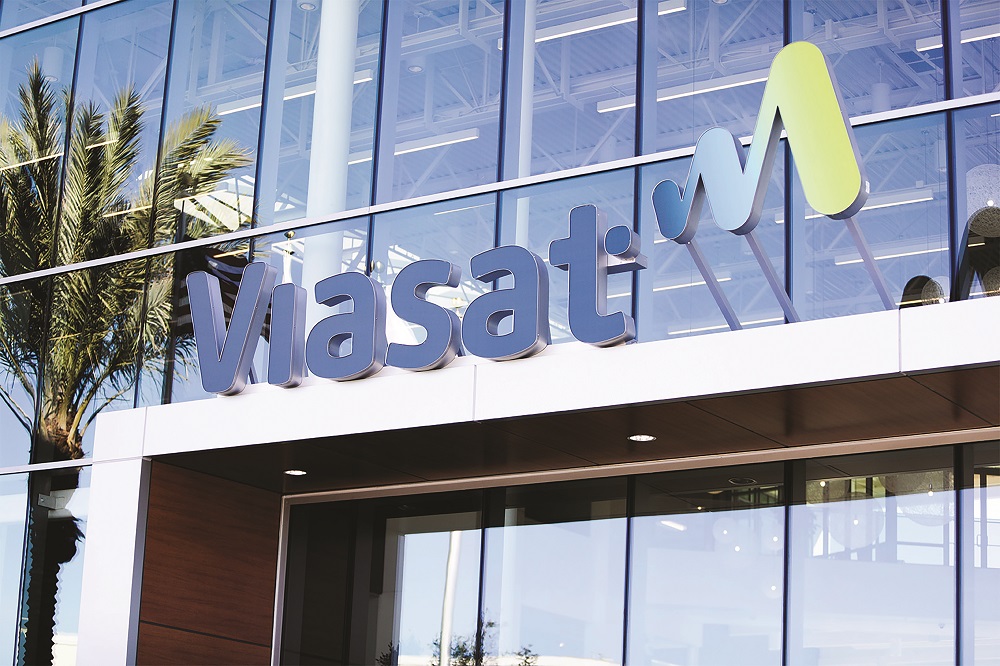TAMPA, Fla. — Geostationary fleet operator Viasat is talking to multiple low Earth orbit (LEO) constellations to bring multi-orbit connectivity to all its mobile broadband services.
After recently announcing plans to integrate low-latency LEO broadband from OneWeb for maritime customers, Viasat CEO Mark Dankberg said May 21 he expects similar agreements for planes and other enterprise markets.
“We actually are working with almost all of the [non-geostationary operators],” Dankberg said on Viasat’s earnings call, and “will be mixing and matching as appropriate based on the deals.”
OneWeb and Starlink currently have the only operational high-speed LEO broadband networks. Amazon aims to start offering early services from Project Kuiper later this year, with Telesat’s Lightspeed and Rivada Networks’ OuterNet coming online a few years later.
However — like Starlink — OneWeb’s network uses Ku-band radio waves, while the geostationary orbit (GEO) broadband satellites Viasat is bringing to its unified maritime-focused NexusWave service are in Ka-band. This poses integration challenges, including the need for separate user terminals.
“Shipboard operators seem to be completely fine with the notion of having separate LEO and GEO antenna components,” Dankberg said, adding it is one of the reasons why the company is starting its multi-orbit offering in maritime.
Proposed networks from Amazon, Telesat and Rivada operate in Ka-band frequencies.
Meanwhile, Starlink has partnered with GEO and medium Earth orbit operator SES to provide a unified service for cruise liners.
Although GEO satellites are more suitable for delivering larger amounts of broadband capacity to high-demand areas, Dankberg said customers are increasingly demanding the lower latency capabilities LEO can provide by being much closer to Earth.
Seeking alliances
Still, Carlsbad, California-based Viasat has no plans to deploy its own LEO constellation.
“Our focus is on creating an ecosystem of partnerships,” Viasat president Guru Gowrappan told SpaceNews in a separate interview.
Gowrappan said Viasat is unconcerned that other legacy GEO operators are also looking to integrate LEO capacity amid mounting competition from Starlink, such as Intelsat, which has partnered with OneWeb mainly for the aviation market.
“In the LEO world, there’s a lot of excess capacity,” he said, whereas GEO operators “pride ourselves in terms of capacity optimization and high utilization.”
Viasat’s NexusWave service is slated to become operational before the end of June as OneWeb works through the ground network issues standing in the way of global coverage.
Acquisition benefits
Viasat reported record revenue of $4.3 billion for the year to the end of March, a 68% increase from $2.6 billion a year ago following its acquisition of British satellite operator Inmarsat.
The growth was primarily driven by continued strength in the group’s government and aviation businesses, despite Starlink’s encroachment here, too.
In April, SES announced a $3.1 billion agreement to buy Intelsat to shore up its business, joining a wave of operator consolidation that also saw legacy GEO player Eutelsat snap up OneWeb last year.
“Competition is good,” Viasat’s Gowrappan said in the interview, “this really says that the market is large and growing, and you’re going to have a lot of competition.”
He said the provision of mobile broadband services is “not a winner-takes-all market” and is big enough for everyone, even with newcomers such as Amazon soon joining the fray.
Viasat posted a 181% year-on-year jump in adjusted EBITDA (earnings before interest, taxes, depreciation, and amortization) from continuing operations to $1.4 billion for its fiscal year 2024.
However, the company also recorded a $1.1 billion net loss, primarily due to $905 million of net write-down charges tied to the failures last year of the ViaSat-3 F1 and Inmarsat-6 F2 satellites, and the canceled ViaSat-4 program.
ViaSat-3 F1, the first of three one terabit per second spacecraft to be provided by Boeing, is on track to begin commercial service in mid-2024 with less than 10% of this capacity following its antenna deployment failure.
Gowrappan said the company has received 55% of ViaSat-3 F1’s $421 million insured value so far, and 100% of its $348 million claim for Inmarsat-6 F2.
ViaSat-3 F2 and F3 also remain on track to launch in time for their services to start in the second half of 2025 across the Americas and Asia Pacific, respectively. ViaSat-2 F1 is located over the Americas but would be moved to cover Europe, Middle East and Africa following the launch of F2.
Overall, Viasat expects to report flat revenue for its fiscal year 2025. Although the company expects more business from government and airline customers in particular, it projects a decline in U.S. fixed broadband revenue amid fierce competition from Starlink.
The company’s shares closed at $15.74 May 22, down more than 16% following its earnings announcement.
